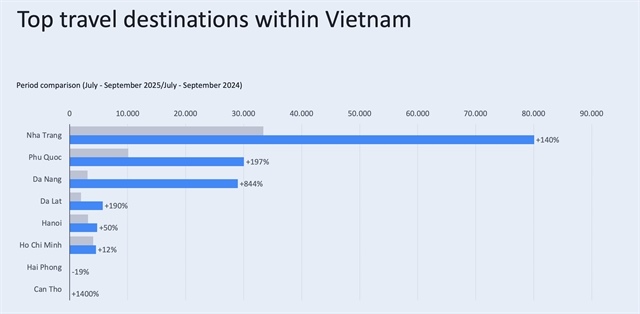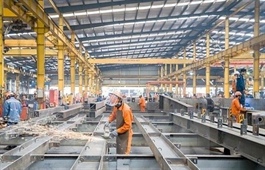Re-operating businesses surge over two months
Re-operating businesses surge over two months
The business community’s confidence in the Government’s drastic and timely solutions has caused the number of businesses re-operating to increase sharply in the first two months of 2022, according to the General Statistics Office.

The latest report of GSO has shown that 22,300 enterprises returned to operation in the first two months of this year, up 102.5 per cent over the same period in 2021.
The total number of newly-established and re-operating enterprises during the first two months reached 42,600, an increase of 46.2 per year.
Of which, Viet Nam had nearly 20,300 newly registered enterprises with a total registered capital of VND277.6 trillion, up 11.9 per cent in several enterprises but down by 17.1 per cent in the registered capital on year.
The average registered capital of a newly established enterprise also decreased by 25.9 per cent compared to the same period in 2021.
The GSO also reported that if including VND173.6 trillion of additional capital registered by 2,332 operating enterprises, the total amount of additional capital registered in the first two months was VND451.2 trillion, down 37.4 per cent on the year.
Also, in the first two months, the number of enterprises temporarily suspending business was 32,700, an increase of 51.3 per cent over the same period last year, while 8,900 enterprises ceased operation to wait for completing procedures on dissolution, up 6.3 per cent.
However, according to the GSO, the indexes on enterprises in February 2022 were quiet compared to the previous month. One of the reasons for this situation was the long Lunar New Year holiday.
In February, Viet Nam had 7,284 newly established enterprises with a registered capital of VND85.2 trillion. Those figures decreased by 44 per cent in the number of enterprises and 55.7 per cent in registered capital on month.
The average registered capital of a newly established enterprise in the month was VND11.7 billion, down 20.9 per cent from the previous month and 47.7 per cent over the same period last year.
To support the enterprises, the GSO has proposed ministries and sectors continue implementing Government Resolution No 128/NQ-CP last October on the safe and flexible adaptation to and control of the pandemic.
At the same time, they need to ensure an adequate supply of raw materials and energy for production recovery and socio-economic development, remove difficulties for important industrial projects, and help factories restore production to keep orders and supply chains.
To be proactive in production for the economy that more than 85 per cent of the manufacturing industry’s output is for export, Minister of Industry and Trade Nguyen Hong Dien said an important task this year was the implementation of solutions to restructure the industry and trade sector based on science and technology, innovation and digital transformation.
At the same time, the ministry would have mechanisms and policies to support and mobilise all resources promoting the development of large State-owned and domestic private enterprises. That would help those enterprises transfer modern technology and directly keep Vietnamese small and medium enterprises participating in the global production and supply chain.
For state-owned enterprises, if the project on restructuring state-owned enterprises in the 2021-2025 period is implemented well, Viet Nam is likely to improve the operational efficiency and competitiveness of state-owned enterprises based on modern technology, innovation of capacity, and management according to international standards.
The project will also help those enterprises play a leading role in developing local enterprises of other economic sectors.
Experts said to develop the digital economy, applying Industry 4.0 for production needs the leading role of large local enterprises. The supporting industries must be created with large enterprises leading for small businesses to participate in the supply chain.
However, at present, Viet Nam has few large private enterprises with multi-industry activities.
The Viet Nam Confederation of Trade and Industry shows that large enterprises hold less than 2 per cent of the existing enterprises, while medium enterprises also account for more than 2 per cent. About 96 per cent are small and micro-enterprises.























